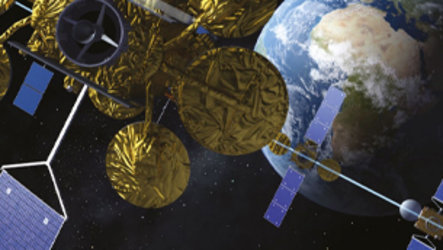Atlas lifts satcom heritage
The greatest hurdle for a product to enter the satcom market is securing its first flight to prove it works in space. ESA is now offering new satcom technology more opportunities to reach orbit.
Satcom services are evolving at a rapid pace, with operators always striving to introduce new or upgraded equipment commercially. But they cannot take the risk that it does not work. They need proof that it has already worked in space, that it has ‘flight heritage’.
The last step in getting fresh satcom space products ready for the commercial market is now part of the ARTES 3–4 programme. Its Call for Proposals is open for companies to submit tenders at any time, and now the new ‘Atlas’ flight heritage element is included.
Products may be embedded into the main commercial mission of a satellite or ride as a passenger separate from the main commercial element.
What is flight heritage?
Satellite operators and manufacturers accept flight heritage when a technology works in a commercially representative environment. Ideally, this means operated by a commercial company on a commercial satellite. The more commercial the environment, the more valuable the flight heritage.
Telecom satellite operators order an average of 20 commercial satellites per year. Every flight is an opportunity to gain flight heritage for innovative products and technologies. Atlas will facilitate the flight of new products on board those satellites. This can be equipment or sub-systems on the platform or payload of a satellite.
When these products have passed every test that can be conducted on the ground, they are considered ready for flight. Atlas takes the process to the final step: proof that they work in space.
One of Atlas’ first projects is a new generation of technologies designed by Thales Alenia Space that improve satellite performance, flexibility and signal security. It will fly on the Eutelsat-8 West-B satellite, and be operated by Eutelsat.
The satcom market is constantly expanding with competition coming from all over the world. For Europe to remain competitive, flight heritage for new and innovative products is a necessity.
By providing consistent additional support with more frequent opportunities for this last developmental step before a commercial sale can be made, Atlas can increase the success rate of ESA and industry’s development efforts.
“The newly launched Atlas extension of the ARTES telecommunications programme recognises and addresses the hurdle faced by European industry to obtain flight heritage for new products to succeed in an increasingly competitive satcom market,” explains Magali Vassiere, ESA director of telecommunications and integrated applications.
Details of how to prepare an ARTES 3–4 Atlas proposal are available on EMITS (http://emits.esa.int/emits/owa/emits.main), referenced AO5891:





